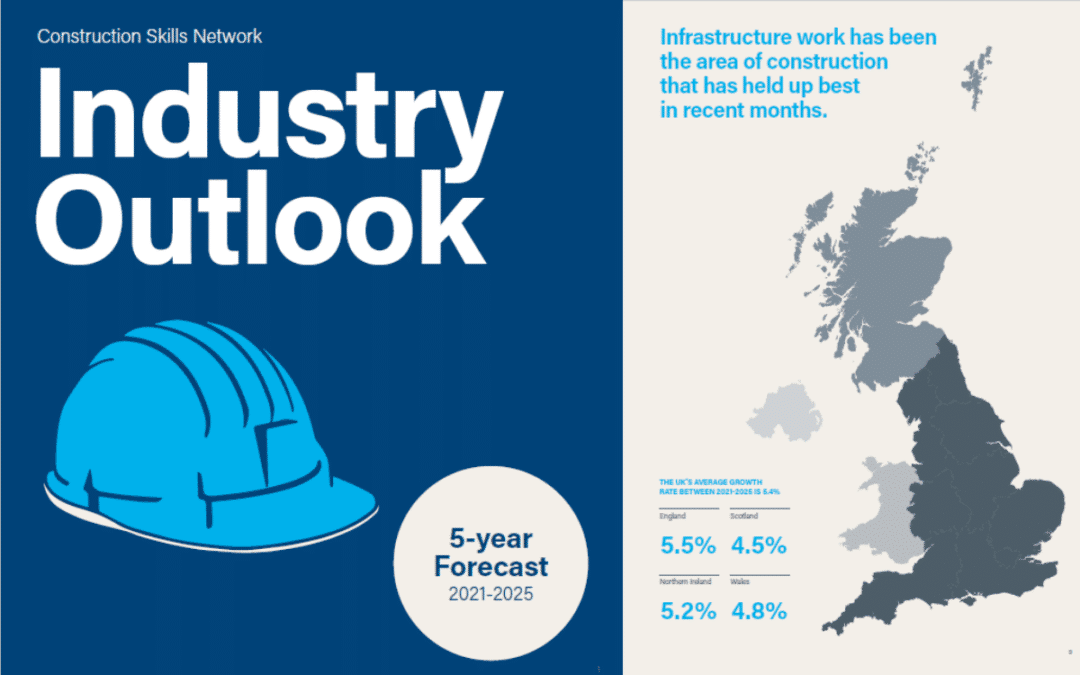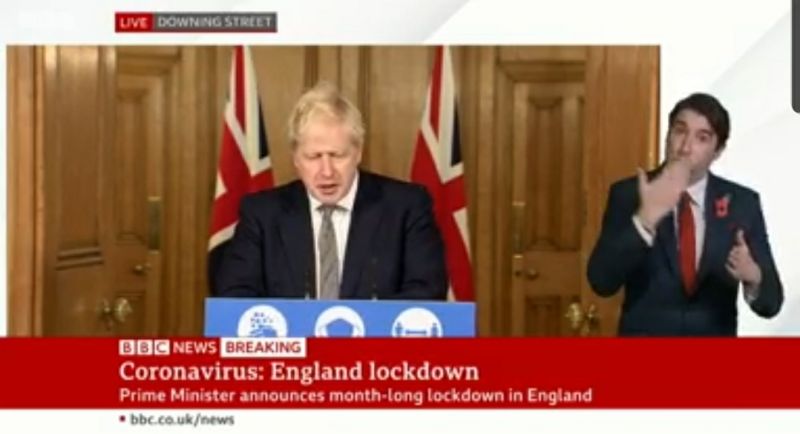
by Iain McIlwee | 5 Nov, 2020 | Insurance, Main News Feed
Workers across the United Kingdom will benefit from increased support with a five-month extension of the furlough scheme into Spring 2021, the Chancellor announced today, 5 November.
The Coronavirus Job Retention Scheme (CJRS) will now run until the end of March with employees receiving 80% of their current salary for hours not worked.
Similarly, support for millions more workers through the Self-Employment Income Support Scheme (SEISS) will be increased, with the third grant covering November to January calculated at 80% of average trading profits, up to a maximum of £7,500.
The Chancellor of the Exchequer Rishi Sunak said:
I’ve always said I would do whatever it takes to protect jobs and livelihoods across the UK – and that has meant adapting our support as the path of the virus has changed.
It’s clear the economic effects are much longer lasting for businesses than the duration of any restrictions, which is why we have decided to go further with our support.
Extending furlough and increasing our support for the self-employed will protect millions of jobs and give people and businesses the certainty they need over what will be a difficult winter.
The Chancellor also announced today an increase in the upfront guarantee of funding for the devolved administrations from £14 billion to £16 billion. This uplift will continue to support workers, business and individuals in Scotland, Wales and Northern Ireland.
The furlough scheme was initially extended until 2 December. But the government is now going further so that support can be put in place for long enough to help businesses recover and get back on their feet – as well as giving them the certainty they need in coming months. Evidence from the first lockdown showed that the economic effects are much longer lasting for businesses than the duration of restrictions.
There are currently no employer contribution to wages for hours not worked. Employers will only be asked to cover National Insurance and employer pension contributions for hours not worked. For an average claim, this accounts for just 5% of total employment costs or £70 per employee per month. The CJRS extension will be reviewed in January to examine whether the economic circumstances are improving enough for employers to be asked to increase contributions.
Throughout the pandemic, the government has acted with speed to protect lives and safeguard jobs with an unprecedented £200 billion support package. The furlough scheme has protected over nine million jobs across the UK, and self-employed people have already received over £13 billion in support. This is in addition to billions of pounds in tax deferrals and grants for businesses.
On top of this, the government has announced:
- cash grants of up to £3,000 per month for businesses which are closed worth more than £1 billion every month
- £1.1 billion is being given to Local Authorities, distributed on the basis of £20 per head, for one-off payments to enable them to support businesses more broadly
- plans to extend existing government-backed loan schemes and the Future Fund to the end of January, and an ability to top-up Bounce Back Loans
- an extension to the mortgage payment holiday for homeowners
- up to £500 million of funding for councils to support the local public health response.
The full speech from the Chancellor is available here.
Visit the FIS COVID-19 Hub here.

by Clair Mooney | 2 Nov, 2020 | Main News Feed
Unemployment starts its anticipated upwards trajectory.
The ONS’ publication of August GDP all but confirmed a “square root” shaped recovery for Great Britain as the economy started to plateau. Growth was 2.1% in August, a sharp fall from 6.4% in July and 9.1% in June, and well below forecasters’ expectations of 4-5%. The result was surprising as the scene was set for a further strong recovery with low Coronavirus circulation and the Government’s July mini-budget providing a sugar-rush for benefitting sectors. A “V-shaped” recovery is now highly unlikely, and many commentators will be revising down their forecasts.
Nonetheless, two thirds of March and April’s fall in output has now been recovered. The economy remains 9% smaller compared to February: output is now at 2014 levels.
August’s result underlines the danger of relying on transient stimulus measures. A robust infrastructure to manage the virus, minimising fatalities while allowing as much normal activity to resume is now vitally important. The likelihood of activity inhibiting measures such as regional lockdowns are now all but certain. It appears that SAGE recommended a “circuit-breaker” mini lockdown four weeks ago among other measures that were not acted upon.
The Construction Sector – Awards values climb 21.2% in September as upward trend continues
According to the latest data release from ONS, construction output increased by 3.0% in August following 17.2% uplift in July and record 21.8% increase in June. Whilst the upward trend has been extremely positive since April 2020, overall construction output in August is still 10.8% lower than February 2020, immediately prior to the Covid-19 lockdown. Comparisons on a year ago show total construction output is 13.0% lower than August 2019 with new work 13.9% lower and repair & maintenance 11.3% lower than a year ago. With the exception of
infrastructure new work which showed annual increase of 1.3%, all other construction sectors showed output decreases compared with August 2019. The most notable of these were the private industrial sector showing output decline of 42.5% on a year ago with the private commercial sector down 22.0% and public sector new housing down 25.2%.
FIS members can access the full report here.

by Clair Mooney | 2 Nov, 2020 | Main News Feed
CITB has today published a new construction industry forecast in which it states that Government investment is needed to support skills in the coming year to prevent a generation of talent being lost.
The CITB Construction Skills Network (CSN) report for 2021-25 outlines three scenarios for how the construction sector might recover from the current recession.
Under the best-case scenario, UK Gross Domestic Product (GDP) would return to pre-Covid-19 levels in 2022, whereas it is likely to be 2025 or later for the mid-case or worst-case. The forecast fall in construction employment varies between 10% and 14% of the workforce, or 286,000-372,000 sector workers. The numbers employed will only approach pre-Covid levels from 2025 onwards.
Action is essential to ensure that this loss of skilled workers does not hold industry back from delivering on its pipeline of work, meeting the governments ambitions for infrastructure, new homes and zero carbon or modernising to boost productivity.
CITB is working with industry to make it easier for people to join construction, to place people who have lost their jobs, to help learners complete their apprenticeships and to carry out essential training and retraining.
The report makes four key recommendations for Government to build on this. These are:
- Protect and retain as much of construction’s existing talent as possible
- Make construction a priority sector in the new National Skills Fund
- Reform the Apprenticeship Levy so that more money can be spent on smaller companies in the supply chain
- Help get more college students into construction jobs and apprenticeships
FIS Skills and Training Lead George Swann said: “The coronavirus pandemic has led to the economy taking a severe hit, with many sectors struggling. This Construction Skills Network, Industry Outlook provides three economic recovery scenarios for the construction industry, categorised as base, mid and worst cases. Each case predicts a steady rise in workforce numbers, which means employer investment in recruitment selection and induction then training and qualifying individuals. FIS can help not only with recruitment and training activities, but in identifying, sourcing and securing funding finishes and interiors employers are eligible for. If you need any information, advice or guidance, please give FIS a call”.
Steve Radley, CITB Policy Director, said: “This forecast shows that a recovery will be slower than previously hoped but that construction will grow and create more jobs over the next five years. This will create skills challenges and it is vital that CITB, industry and government work together to meet them.
“CITB is investing levy funds to make it easier for people to join construction, to place people who have lost their jobs, to help learners complete their apprenticeships and to carry out essential training and retraining.
“Government can play a key role and providing certainty on its infrastructure pipeline, working with industry to help more college students into construction jobs and apprenticeship and prioritising construction in the new National Skills Fund to help it recruit and train fresh talent. It should also look at reforming the Apprenticeship Levy to allow employers to pass on unspent vouchers in bulk.”
CSN’s annual average sub-sector growth rates over the next five years see public housing in the strongest position (8.2%), while private housing (7.8%) and infrastructure (5.5%) are also expected to grow strongly and be key drivers for recovery.
Growth is expected to be evenly spread across all nations, with a UK average rate for 2021-2025 at 5.4%, England at 5.5%, Northern Ireland at 5.2%, Wales at 4.8%, and Scotland at 4.5%.
In the short term, 2021-2022, limited recruitment of new entrants and apprenticeship starts is expected, with a rise in unemployment but demand for skilled workers in infrastructure. In 2023-2025 recruitment of new entrants and apprenticeships should pick up with increased demand for training from employers.

by Iain McIlwee | 1 Nov, 2020 | Insurance, Main News Feed
The PM has announced that, in line with the new National Lockdown announced on the 31st October, Furlough arrangements through the Coronavirus Job Retention Scheme will be extended “until December”. Under the extended scheme, workers in any part of the UK who will be paid at least 80% of their salary up to £2,500 a month. The flexibility of the current CJRS will be retained to allow employees to continue to work where they can.
Employers small or large, charitable or non-profit are eligible and because more businesses will need to close, they will now be asked to pay just National Insurance and Pensions contributions for their staff during the month of November – making this more generous than support currently on offer.
The proposed Job Support Scheme will not be introduced until after Coronavirus Job Retention Scheme ends.
Access the FIS COVID-19 Hub here.

by Iain McIlwee | 31 Oct, 2020 | Main News Feed
The Prime Minister today, 31st October, announced that from Thursday the country would return to National Lockdown in England for a period of 4 weeks. The lockdown rules announced are less strict than those announced earlier in the year, but will see restrictions in place on non-essential travel and parts of retail and many hospitality and leisure businesses being forced to close. However, in his speech the Prime Minister confirmed that the Construction and Manufacturing Sector would not be expected to stop working. He also announced that the Furlough scheme would be extended into December, the Government will once more put in the full 80% of salary (up to the maximum of £2,500), with the employer only covering pension and national insurance contributions..
Lockdown plans will be set before Parliament this week with the intention of commencement on Thursday.
Commenting on the lockdown FIS CEO, Iain McIlwee stated “This is clearly a blow to National morale and will impact the economic recovery that we had started to see, however, at least the Prime Minister name checked construction and manufacturing so we have clarity as a sector about how to proceed and will not return to the uncertainty and chaos that the industry experienced at the outset of the first lockdown.”
You can access resources in the FIS COVID-19 H&S Hub to support social distancing at work and the FIS COVID-19 Hub should you require letters of authorisation to support hotel stays or travel requirements related to construction activities.
A full transcript of the Prime Minister’s speech and accompanying slides are available here.
Devolved Nations
Scotland now has five COVID protection levels in place, ranging from ‘Level 0 ‐ Nearly Normal’ to ‘Level 4 ‐ Lockdown’, and you can check the level for an area by entering the postcode.
Wales is under its own ‘firebreak’ lockdown until Monday 9 November 00:01am. Under this “firebreak” that was implemented from Friday 23 October:
- Construction and manufacturing can continue, provided employers take all reasonable measures to mitigate the spread of coronavirus. This includes builders’ merchants, which can remain open.
- In a last minute change to the guidance, work in people’s homes can continue, as long as both the worker and household members have no symptoms of coronavirus. If a member of the household is self‐isolating, works are not recommended except to repair faults posing a direct safety risk.
- All accommodation providers are required to close, unless they are providing ‘specific services’ at the request of the Welsh Government or a local authority. This includes providing emergency accommodation for key workers, which include those responsible for the construction or maintenance of public service buildings.
Northern Ireland In Northern Ireland, a tighter lockdown has been implemented for four weeks, increasing restrictions on travel and gatherings. Again construction sites are allowed to continue to operate in compliance with social-distancing measures. Border counties in the south such as Donegal, Monaghan and Cavan have seen their level of restrictions increase, meaning only essential workers should go to work; construction has been deemed as ‘essential’ and will be allowed to continue. These restrictions are in place until Friday 13 November.

by Clair Mooney | 30 Oct, 2020 | Main News Feed
As the UK leaves the EU on 1 January 2021 new rules come into force for construction products that are currently covered by the European Construction Regulation (CPR). This requires products covered by a harmonised European Norm (hEN) to carry a CE mark when placed on the market. From January new rules in the UK require a new mark of conformity Assessment (UKCA) mark to be applied to products put on the market in the UK; Northern Ireland has separate rules where CE marking will be acceptable if the product comes from the EU or a UKNI mark for products coming from outside the EU which includes the UK.
Placing products in the UK market will require the Notified Body to be in the UK and in the EU where manufactures from the UK are exporting to the EU
To help, The Brexit working group of the Construction Leadership Council has published advice and information on the conformity marking of construction products
Read the full press Release here.
And the new guidance EU EXIT BUSINESS READINESS: CONFORMITY MARKING OF CONSTRUCTION PRODUCTS HERE






